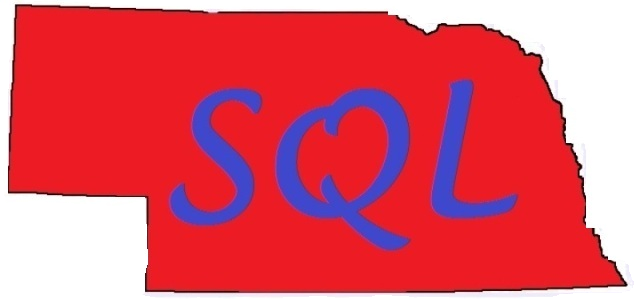PASS SQLSaturdays are free 1-day training events for SQL Server professionals that focus on local speakers, providing a variety of high-quality technical sessions, and making it all happen through the efforts of volunteers. Whether you're attending a SQLSaturday or thinking about hosting your own, we think you'll find it's a great way to spend a Saturday – or any day. - sqlsaturday.comSounds simple, doesn't it? Here are the top three reasons I *LOVE* SQLSaturdays:
The opportunity to learn - the quality and quantity of free training available at a SQLSaturday never ceases to amaze me. Most SQLSaturdays have anywhere from three to six tracks, resulting in 15-30 sessions on everything from database administration to business intelligence to professional development and everything in between. Sessions range from 100-level introductory up through 400-level expert.
If you want to pay $100-$150, most SQLSaturdays offer full-day "pre-conference" sessions on the Friday before the event (and sometimes even the Thursday before as well). While it isn't free, there aren't very many places to get a full day of high end training for a hundred bucks!
Another aspect of this is *who* provides the training. I regularly see sessions from Microsoft Certified Masters (MCM's) and Most Valuable Professionals (MVP's) as well as amazing content from first-timers dipping their toes in the pond. At a recent SQL Saturday (in Boston) I saw an MCM present a great talk on working with virtualized SQL, one MVP speak on working with your infrastructure team, and another MVP talk about the Query Store, an upcoming feature from the unreleased next version of SQL Server. Having said that, one of the best SQLSaturday sessions I have ever seen came a couple years ago from a first-time speaker excitedly presenting a new way she had devised to analyze trace data.
All of these speakers share their expertise without pay or reward (other than usually a nice dinner the night before).
The opportunity to share - another fun part of SQLSaturday for me is being one of those speakers sharing what I know for free. I have written before about the benefits of blogging and speaking, and they are many. The biggest benefit to me personally (not counting the joy of helping others) is how creating a presentation helps force me to learn a new topic or a better way to do something I already do.
The presentation I used to give all the time was about doing health checks using Glenn Berry's DMV scripts, Ola Hallengren's maintenance solution, and how to make them work together to check client servers. The presentation I frequently give now is about Extended Events (XEvents) - I told myself about a year ago I needed to learn more about XEvents and Powershell, and I knew (for me) creating presentations would help. I submitted an Intro to Extended Events 100-level session to a couple of SQLSaturdays, and when it was chosen I was suddenly very motivated to learn more about the topic to produce the content!
The first presentation - the health check talk - highlights an aspect of how I work with SQL Server, and it is shared by many others. The are lots of free tools and shared knowledge out there about SQL Server, and you don't need to recreate the wheel nine times out of ten - a little Google-Fu or #sqlhelp will usually give you an answer or at least give you raw material you can mold into an answer. Just because you are working with someone else's raw material does not mean you can't write or speak about the situation - just make 100% sure you give credit (and notation) whenever it is due. If you read my blog or see me speak with any regularity you will see that a lot if what I write about is *how* I use someone else's scripts, whether modified or "straight from the box," as opposed to creating completely new scripts, but I also reference those authors' blog posts, forum answers, and Twitter feeds.
You don't have to create a completely new way to do something for it to be useful to share!
The opportunity to network - I list this third, but it can often be the most important. While it can be very useful to interact with the #sqlfamily online, there is no substitute for being able to sit down across the table from an expert on a topic you need help with and getting hundreds of dollars worth of free consulting while forming friendships that continue on after the event ends. There is nothing like the #sqlfamily, and it is fun to watch people from other areas as their eyes open wide. I have seen an Oracle DBA visit a SQLSaturday and watched their jaw hit the floor when they heard a speaker sharing their expert knowledge for free; I have had a manager ask me "How did you get the answer so fast?" and reply "I got on Twitter and asked the person who wrote the feature and he told me"; I have watched people who have never met in person raise thousands of dollars for charitable causes suggested by #sqlfamily members.
Another way to get involved and network is to volunteer at a SQLSaturday. I mentioned the speakers are volunteers, but so ate all of the others involved - coordinators, room monitors, check-in staff, and the rest.
This networking is invaluable to your career in other ways - two of my last three jobs came from a member of the #sqlfamily notifying me directly of an opening or making a key introduction to help me start the process.
SQLSaturdays are awesome!!!




